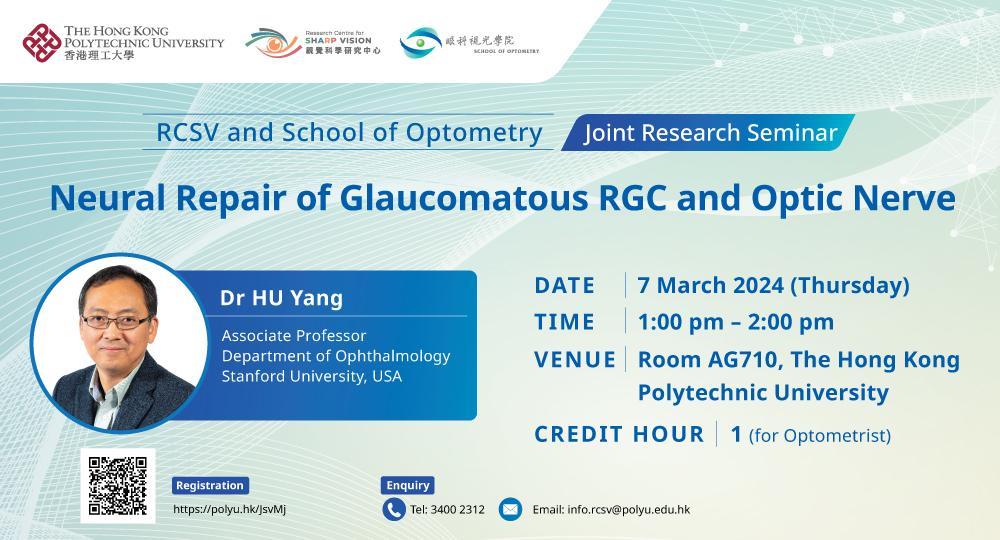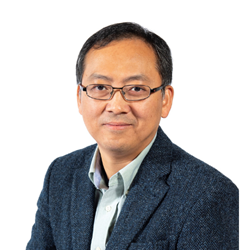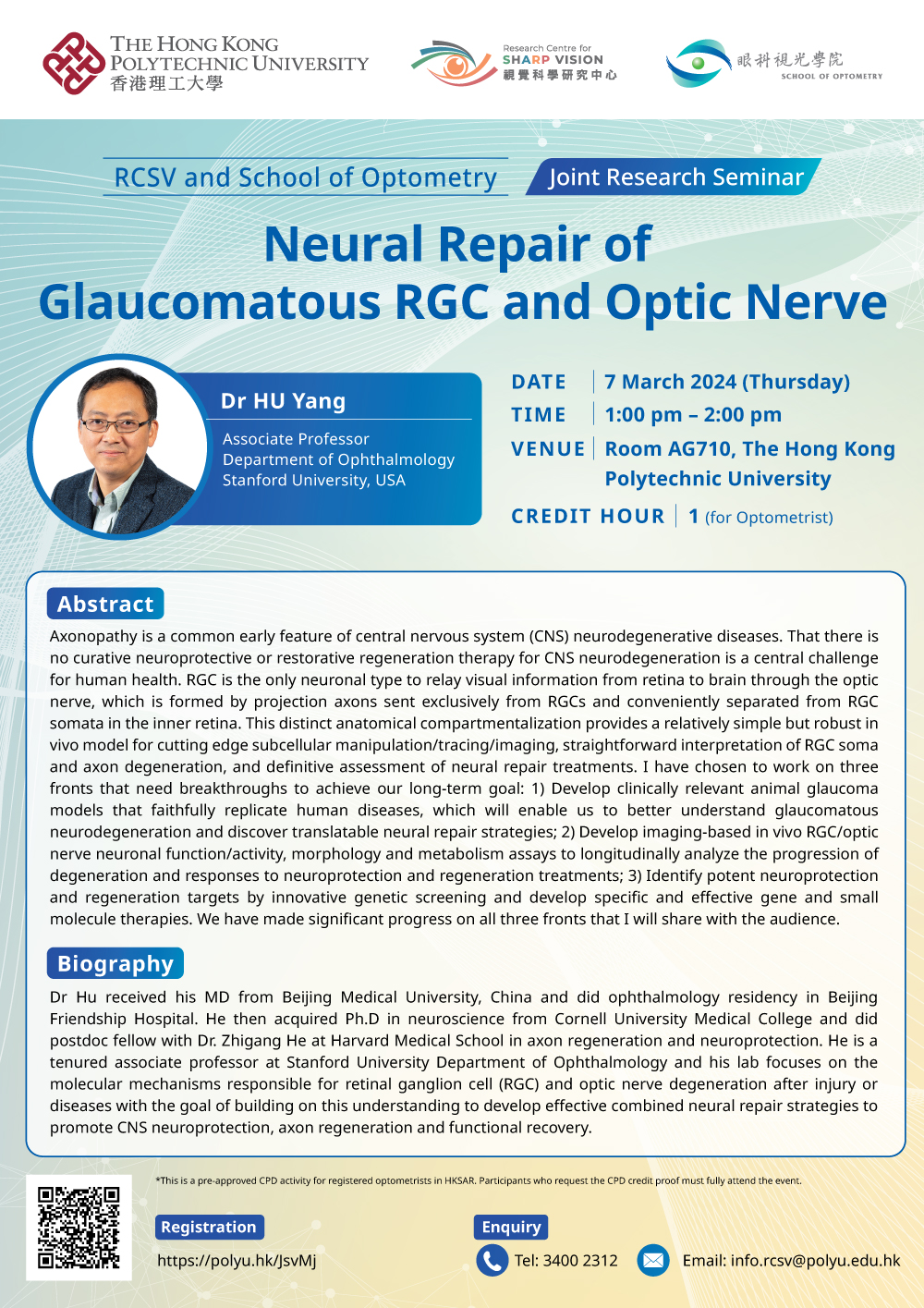RCSV and School of Optometry Joint Research Seminar - "Neural Repair of Glaucomatous RGC and Optic Nerve"
Conference / Seminar

-
Date
07 Mar 2024
-
Organiser
School of Optometry
-
Time
13:00 - 14:00
-
Venue
Room AG710
Speaker
Dr HU Yang
Summary
Axonopathy is a common early feature of central nervous system (CNS) neurodegenerative diseases. That there is no curative neuroprotective or restorative regeneration therapy for CNS neurodegeneration is a central challenge for human health. My lab emphasizes understanding fundamental molecular mechanisms responsible for neuronal soma and axon degeneration, while maintaining a consistent focus on clinically relevant scenarios that will allow us to translate lab discoveries into effective neuroprotection and regeneration treatments for CNS axonopathies. Specifically, we exploit the anatomical and technical advantages of the mouse retinal ganglion cells (RGCs)/optic nerve system to study optic neuropathies, especially glaucoma, the leading cause of irreversible blindness. RGC is the only neuronal type to relay visual information from retina to brain through the optic nerve, which is formed by projection axons sent exclusively from RGCs and conveniently separated from RGC somata in the inner retina. This distinct anatomical compartmentalization provides a relatively simple but robust in vivo model for cutting edge subcellular manipulation/tracing/imaging, straightforward interpretation of RGC soma and axon degeneration, and definitive assessment of neural repair treatments. I have chosen to work on three fronts that need breakthroughs to achieve our long-term goal: 1) Develop clinically relevant animal glaucoma models that faithfully replicate human diseases, which will enable us to better understand glaucomatous neurodegeneration and discover translatable neural repair strategies; 2) Develop imaging-based in vivo RGC/optic nerve neuronal function/activity, morphology and metabolism assays to longitudinally analyze the progression of degeneration and responses to neuroprotection and regeneration treatments; 3) Identify potent neuroprotection and regeneration targets by innovative genetic screening and develop specific and effective gene and small molecule therapies. We have made significant progress on all three fronts that I will share with the audience.
Keynote Speaker

Dr HU Yang
Associate Professor
Department of Ophthalmology
Stanford University, USA
Dr. Hu received his MD from Beijing Medical University, China and did ophthalmology residency in Beijing Friendship Hospital. He then acquired Ph.D in neuroscience from Cornell University Medical College and did postdoc fellow with Dr. Zhigang He at Harvard Medical School in axon regeneration and neuroprotection. He is a tenured associate professor at Stanford University Department of Ophthalmology and his lab focuses on the molecular mechanisms responsible for retinal ganglion cell (RGC) and optic nerve degeneration after injury or diseases with the goal of building on this understanding to develop effective combined neural repair strategies to promote CNS neuroprotection, axon regeneration and functional recovery.




